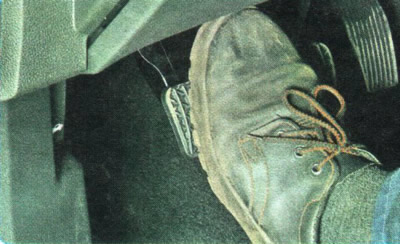1. Malfunction of the engine and its systems (see «Engine malfunctions», With. 42).
2. Clutch slip due to wear or malfunction of the elements of the hydraulic drive to turn it off.
3. Malfunction of the brake system - braking of one or more wheels on the go, incorrect adjustment of the parking brake.
4. Insufficient tire pressure.
5. Car overload.
A complete diagnosis of the car should be carried out by highly qualified specialists using special diagnostic equipment, so contact a car service.
You can independently carry out the following work.
1. Check and adjust the air pressure in the tires.
2. Check the operation of the service brake system and parking brake. It is not necessary to remove the wheels for this. Find a flat section of the road and in dry, calm weather, conduct a ride to determine the run-out of the car. The car must be fully fueled, only the driver is in the cabin. Accelerate the vehicle to 50 km/h, level off the speed, and then disengage the gear and coast to a complete stop. Make another run in the opposite direction. The overrun should be about 500 m.
3. Check the operation of the ignition system as described above.

4. On a vehicle with a manual transmission, check the operation of the clutch. The initial check is carried out on a flat, obstacle-free area. Set the accelerator pedal to a higher idle speed - approximately 1500 min-1. Brake the vehicle with the parking brake. Depress the clutch and shift into 1st gear. Then begin to slowly release the clutch pedal. If the engine stalls, the clutch is working and not slipping. If the engine does not stall, the clutch is worn and needs to be replaced.
